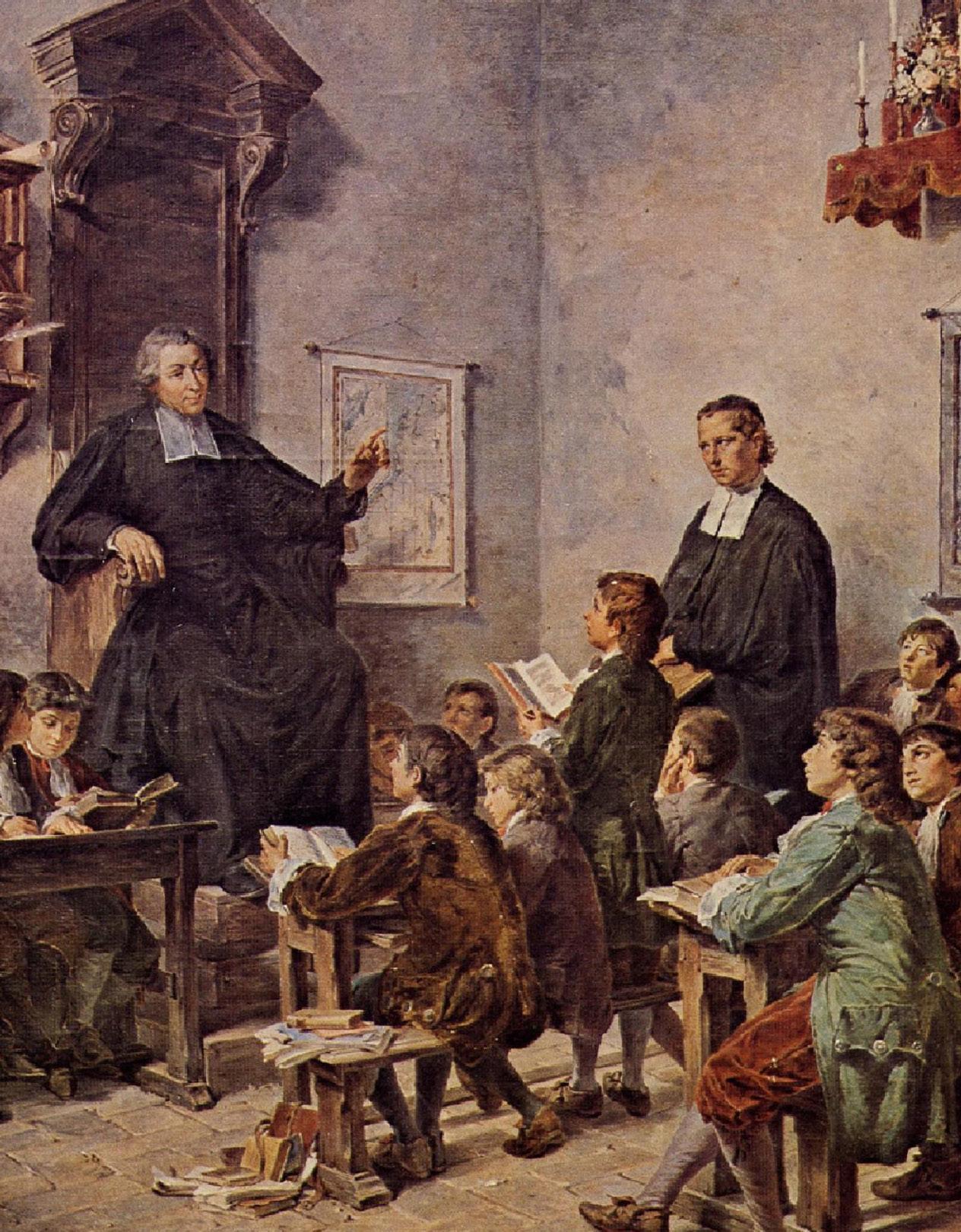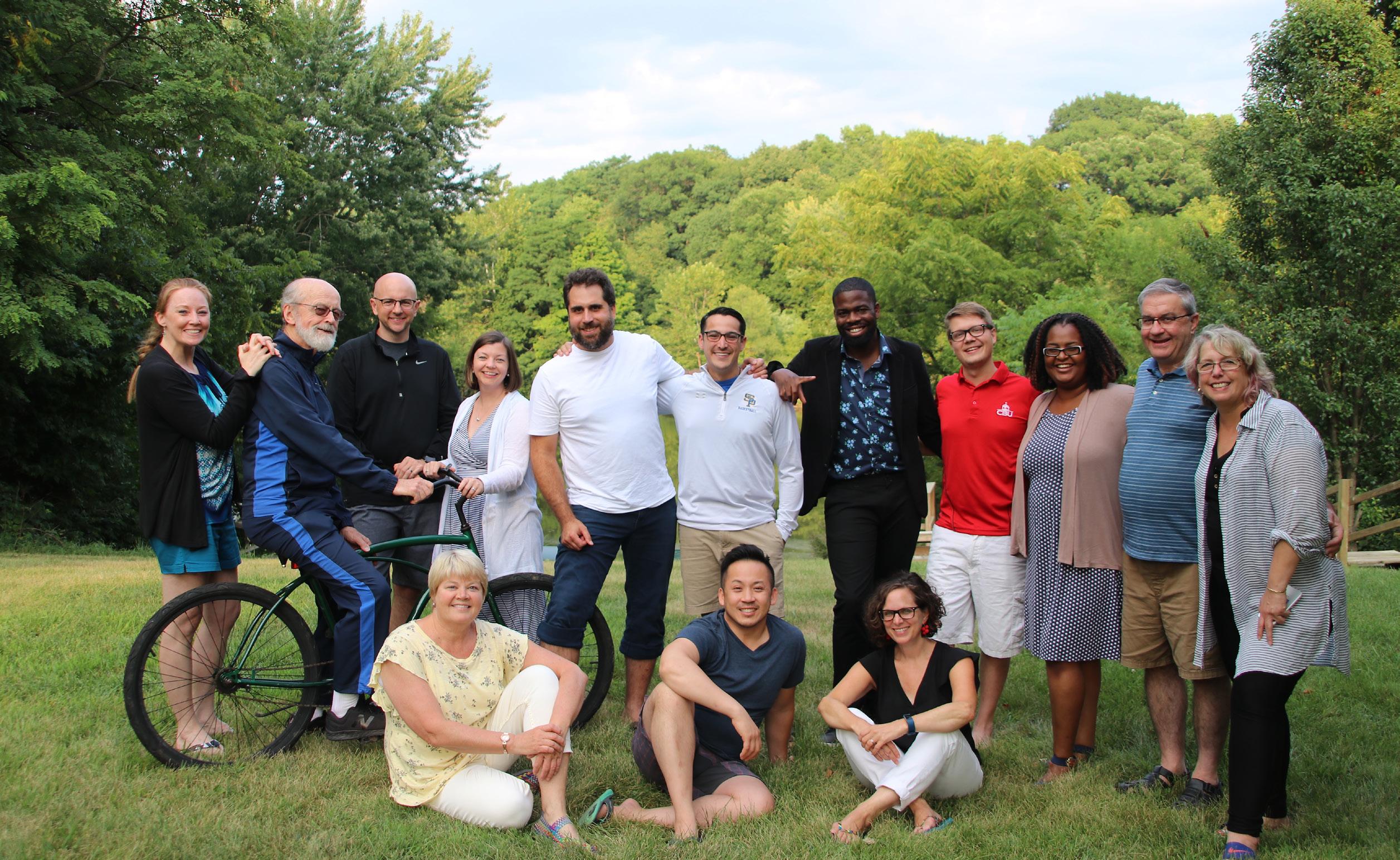
9 minute read
Formation: Transmitting the Lasallian Charism
BY BROTHER TOM JOHNSON, FSC
One of my favorite stories is about a young man who entered a monastery. Very soon afterward, he began to notice and to be dismayed by the fact that many monks were leaving the monastery. Troubled and confused, he went to the abbot. Why, he asked, did some men, after having committed themselves to a way of life, forsake it for something else? The abbot responded with a story:
Advertisement
Once upon a time, a dog lay sleeping in the warm sun of the village square. All of a sudden, out of the corner of his half-opened eyes, he spied a rabbit darting across the road. He took off immediately in hot pursuit. He ran up and down the streets and through the countryside, keeping up the chase day and night and seeming never to tire. Eventually, other dogs saw him and joined the run. But, one by one, they grew tired and stopped running. Why? They were running only because they had seen the first dog doing so. They had never caught sight of the rabbit in the first place. So, the abbot concluded, the one who has never glimpsed the vision grows easily tired of running. He gives up the chase because he cannot remember why he had begun to run in the first place (Irvin Boudreaux, “My Dog Saw the Rabbit,” A Pastor’s Thoughts, July 14, 2014, https://ijboudreaux.com/2014/07/29/my-dog-saw-the-rabbit/).
This little story is full of wisdom about vision and mission. It demonstrates in a parable the importance of having a vision and a mission before us. The Lasallian mission, as stated in the Rule of the Brothers of the Christian Schools, exists “to provide a human and Christian education to the young, especially the poor, according to the ministry which the Church has entrusted to it.”

Formation imparts the charism and helps Lasallians view their work as a vocation.
Courtesy Lewis University
INTERNALIZING THE MISSION
As Lasallians, we work day in and day out in the mission, but if we do not internalize it and let it become part of ourselves, it might soon just become work. This process of internalization is what formation is about. It helps us to develop a common and explicit vision that enables us to understand ourselves and how we relate to the mission and ministry we share—this way, we remember why we began to run.
The term “charism” means a God-given gift for the sake of others. We all have charism, and each religious congregation has a charism. Brother John Johnston, FSC, wrote the Lasallian charism “is to make the loving and saving presence of Jesus Christ a visible and effective reality in the world of education, in the world of the young” (Brother John Johnston, FSC, Living Authentically in Christ, Pastoral Letter, 1994).
The goal of formation is to pass that charism on to others so that they can discern if their personal gifts, or charism, are a match with the charism of the community they are joining (adapted from Michael Casey, OCSO, The Art of Winning Souls, Liturgical Press, 2010, 28). I believe this description of formation applies to Brothers as well as Lasallian Partners.

Brother Tom Johnson, FSC, left, serves as director of the novitiate.
Courtesy James Hannon
BEYOND THE FACTS
Formation is more than information. Reading about De La Salle’s life and the mission statement of your ministry can provide information, but that is not enough. Formation imparts the charism and moves us from seeing our work in a Lasallian ministry as a job to seeing it as a vocation. John Baptist de La Salle made this vocational vision of education the centerpiece of his writings.
The question arises about what constitutes formation. The purpose of this article is to name some aspects of formation as I see it. First, however, we have to realize formation is not “one size fits all.” The participants in the formation determine much of what happens in formation.
I am involved in formation of young Brothers. These men are discerning a lifestyle and a commitment. They explore their possible vocation by interacting with Brothers, participating in service and community life, learning about religious life and the Lasallian mission, and, ultimately, taking part in our yearlong novitiate where they are offered the opportunity for deep discernment and spiritual development.
Other Lasallians may find themselves on a lifelong journey but that is not the intent of the formation they experience. Formation emphasizes different aspects depending on whether the participant is a teacher, staff member, administrator or board member. I believe there are components of formation that apply to all. I aim to cover some of them here.
Components of formation, whether for Brothers or Lasallian Partners, are both external and internal. The external are primarily information. The internal elements concern our development as persons.

The District of Eastern North America offers a formation experience for Young Lasallians, called VEGA, to help immerse them in the Lasallian mission.
Courtesy District of Eastern North America
INTERNAL COMPONENTS OF FORMATION
• Self-Knowledge: Formation includes deepening our own self-understanding. We come to know our strengths and to embrace our weaknesses. With reflection and self-knowledge, we recognize our defensiveness, what triggers anxiety, and how to integrate all human aspects in ourselves. Sometimes tools such as Myers-Briggs and Enneagram can help us understand ourselves. Often journeying with others can be a part of a journey of self-discovery.
• Worldview: Recently, I heard of two Lasallians coming to this Region to explore and participate in the mission here. They remarked that it was hard to commit themselves because each ministry had a drawback; at one place, they did not like the neighborhood; at another, they did not believe in single-gender education. The list goes on. But the reality is the Lasallian mission is carried out differently in different places. If one keeps his or her limited worldview, an important part of the charism is missed.
The story of De La Salle is the story of widened horizons. Our connection with his story and with others in formation helps us to put aside our provincial views and see others and the world with a broad perspective. Formation helps to create a new way of looking at the world. It involves our inner life of knowing, remembering, willing, feeling and imagining. It also involves our inter-relational life: our family, our school and our community. We try to understand the cultural differences among our students and understand that the Lasallian world is larger and more complex than our particular ministry.
• A Change of Heart: The theme of heart is recurring in De La Salle’s writings. We are very aware of the idea of touching hearts through which we can perform “miracles.” We conclude each prayer with “Live Jesus in our hearts.” Yet, we must have a change in our own hearts to touch hearts and have Jesus in our hearts. Changing of our hearts is a major component of formation. This helps us to see the perspective of our colleagues, our students and our leaders. A change of heart helps us to look beyond rules—important as they are—to the individual. It helps us go the “extra mile” now and then to help colleagues or students.
• Spiritual Growth: Formation is about knowledge, relationships and actions, but most of all, it calls us to deepen our spirituality, to change our hearts by being self-reflective and living more and more for others. One of the gifts of Lasallian formation is the emphasis on faith and zeal. The zeal that formation may encourage is guided by faith that is essentially a trust in God. We have Lasallians of various religious traditions, but I believe that faith, common to all traditions, is a basic trust that God is with us for life. Lasallian formation includes prayer or reflection regardless of—but respectful of—one’s own religious traditions. In some places of the world, we can have Buddhist, Hindu and Muslim Lasallians who can find through their own traditions meaning in the Lasallian tradition.

Formation experiences help give educators a deeper understanding of the Lasallian mission, on which they rely in their interactions with students.
Courtesy De La Salle High School, New Orleans
EXTERNAL COMPONENTS OF FORMATION
Formation does include an informational component. Those formed in the Lasallian charism need to have knowledge of Lasallian history, present reality and educational experience. Here are some knowledge-based components that I call external.
• Factual Information: We need information of the founding story of John Baptist de La Salle, his recognition that he was called to go beyond his vocation as a priest and cathedral canon in his conversion. This is not only information, but also a changing of the heart, the vision and very soul of the hearer.
• Accompaniment: Formation for association is reflected first in accompaniment, journeying with others, being part of a community, and being committed to the mission and others working in the mission. Formation is not solitary but communal. Formation is done together locally, in Districts, Regions and internationally. Being a Lasallian implies association with others.
• Education Ministry: Lasallian spirituality is educational spirituality lived out in a particular educational ministry. De La Salle’s writings, especially the Meditations for the Times of Retreat and his Conduct of Christian Schools, give us an underpinning for how we interact with students, actually teach classes, and how we ought to correct rather than punish when dealing with student behavior issues. We learn and appreciate that our school cultures must reflect our charism where all can feel at home while learning and being encouraged to excel.
• Invitation: Formation is not for us alone. Like the apostles, we are filled with zeal not simply to build up our numbers but for the sake of others who may be nourished by the Lasallian charism. We owe it to young men to invite them to consider the Brother’s vocation and to our colleagues to consider Lasallian formation because the invitation may awaken a call that is in them.
Formation is not merely knowledge. It is relationships and methods and, most of all, it attempts to bring forth internal change. With the vision, we will not give up the chase.
QUESTIONS FOR REFLECTION
1. We use the term “formation” regularly as Lasallians. Did you take away any new insights about the aims of formation from this article?
2. What Lasallian formation have you experienced? How has it invited you to more deeply internalize the Lasallian mission?
3. How do the internal and external components of formation resonate with your experience?
Brother Tom Johnson, FSC, is the director of the RELAN Novitiate. He served as Vicar General for the Institute of the Brothers of the Christian Schools from 2007-2014.








